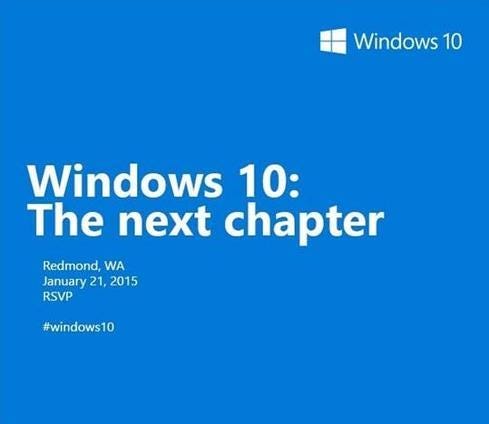Geekend: HoloLens Makes Microsoft CoolGeekend: HoloLens Makes Microsoft Cool
In the HoloLens, Microsoft might at last have its version of the iPod, a cool product that turns the company's image around.


Windows 10: 7 Predictions Of What's Next
Windows 10: 7 Predictions Of What's Next (Click image for larger view and slideshow.)
It isn't a surprise to anyone, including Satya Nadella, that Microsoft has a coolness problem. The easy way to put it is that it's not Apple, but the coolness issue goes deeper than that. Despite the Xbox, Microsoft is associated with work. That's where we are forced to deal with its products every day. What's cool about that?
Enter the HoloLens: The thing that might make Microsoft cool for the first time, and the "killer app" for gaming that Oculus Rift is missing. I don't know if Microsoft would like me wording it this way, but I think of HoloLens as part Oculus Rift and part Google Glass. It is a wearable computer powered by Windows 10 with headgear that allows for augmented reality in the form of 3D holograms. Unlike the Oculus Rift, which has an opaque lens that immerses you in your environment, the HoloLens helmet combines 3D graphical holograms with actual reality. Here's a video:
HoloLens can follow your eyes and your head movements, as well as hand gestures, in order to manipulate the holograms. Microsoft has already created a 3D design app for HoloLens that allows you to go straight from prototype to 3D printing. In the demo of HoloLens during an event at its Redmond, Wash., headquarters Wednesday, Microsoft created a design for a toy helicopter and then produced the working helicopter for the audience.
It should be pointed out that there was a little stagecraft going on there, since clearly the design didn't include creating working motors and whatnot from scratch. It was merely a design of modular parts. Still, it is quite impressive. While it seems out of the future, it does have a present. NASA and Microsoft have already hooked up for a project called OnSite. OnSite will allow scientists to "walk" the surface of Mars to get a better idea of what the Curiosity Rover is seeing. Using maps and readings created by Curiosity, scientists can explore the Martian terrain as if they were there, minus the killer radiation and lack of oxygen.
[Want to see what else Windows 10 has to offer? Read Windows 10: Free Upgrades, Spartan Browser & Holographics.]
Remotely exploring Mars is nifty and all, but let's face it: The perfect place for HoloLens is gaming. And it is all about that transparent lens. This is the "killer app" to make VR gaming a reality. I've been down on VR goggles as gaming devices since they were announced. The reason was the opaque lens. Imagine standing in the middle of your room, totally immersed in a game universe that was out of sync with your own. You'd trip over the coffee table. You'd slam your fist into the TV. You'd kick your dog, who was just coming up to see why you were playing without him. For the Rift, or any other VR device, to work, you need to sit (killing the gesture part of it) or play in an empty, padded room.
The HoloLens lets you see the game and see reality at the same time. You might have caught a little gaming action in the video above. Right at the one-minute mark, you can see Microsoft's recent acquisition, Minecraft, played in 3D right in a man's living room. It blends in with the reality of the room. No kicking the coffee table. And that's not all. As do many VR helmets, the HoloLens has 3D sound, so if a hologram is sneaking up behind you, you can hear it, and you'll know it's behind you. And, unlike the other VR devices, you'll know whether the sound you heard was the game or a family member, so you don't clock your kid coming up to ask for a turn.
For movies or other more sedentary activities, Oculus Rift may provide a more immersive environment. But HoloLens is augmented reality at an entirely new scale. It is a computer, not a play thing. But it is also not intended to be a covert wearable. It isn't really and truly a mobile device. So it lacks the creep factor that Google Glass had. In other words, it is a shockingly cool thing coming from a usually uncool place.
I don't see HoloLens ever being used for 3D prototyping on an industrial scale. I don't see it having much of a place at work. But I think it fits well into Microsoft's living room strategy. If my Xbox One plays nicely with my HoloLens, then Microsoft can lock down gaming and entertainment in the living room. If it creates the app environment, maybe it even gets out of the living room. But, even if it sits on my coffee table waiting for me, it is clearly a game changer for the squares in Redmond, Wash.
Now everyone is going to ask, "Why didn't Tim Cook think of this?"
Attend Interop Las Vegas, the leading independent technology conference and expo series designed to inspire, inform, and connect the world's IT community. In 2015, look for all new programs, networking opportunities, and classes that will help you set your organization's IT action plan. It happens April 27 to May 1. Register with Discount Code MPOIWK for $200 off Total Access & Conference Passes.
About the Author
You May Also Like






